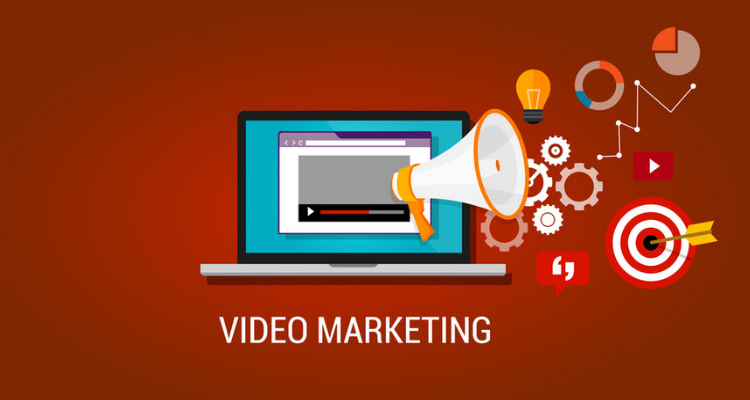Back in 2008, researchers from the University of California, San Diego, concluded that the brain of an average American was exposed to 34GB of information on a daily basis.
More than a decade later that number undoubtedly increased, which brought about another phenomenon – banner blindness. The attention of social media users hit an all-time low and with all those Facebook, Instagram, and Twitter posts, stories, and ads that keep on popping up, it’s extremely hard to capture their attention.
That’s why you need to have a well-thought-out social media marketing strategy to cut through the noise.
And the first step is creating a budget and calculating your ROI.
So, What’s the Price Tag?
Although there’s no one-size-fits-all approach, B2B companies spend 2-5% of their revenue on marketing, while in the B2C industry the average spend is between 5-10%. If we add that out of this figure, somewhere between 16-25% is allocated to the social media budget, you can have a general idea of how much you should spend on this fragment of marketing.
No matter the size of your company, here are the most important considerations to take into account before budgeting your social media efforts:
- Yes, you need a precise social media budget. This will prevent you from impulsive decision-making and acting on instinct, which wouldn’t get you very far.
- Do proper research on your social media channels and identify which ones to focus on. Spreading yourself too thin is the least productive
- Keep track of your results, then compare how much you spend and how much you earn from every social marketing channel. This will allow you to tweak your strategy and double down on the ones that bring the best results.
Elements of an Effective Social Media Budget
Before you start planning your social media budget, you first need to understand what you’ll be investing your money into and why every element is important.
1. Content Creation
This one is obvious, since content is the cornerstone of every successful social media strategy, which means that it should get the lion’s share of your social media budget.
Apart from hiring a good content writer and copywriter, bear in mind that there will be additional costs if you want to diversify your content and make it visually appealing. Namely, images and video play an important role in attracting traffic and generating engagement. Social videos get 1,200% more shares than text, so your investment will be worthwhile.
2. Social Media Tools
You’ll need to pay for an arsenal of tools that will help you create and monitor your social media posts. For example, to create relevant content and copy for your ads, you need keyword research tools, which are essential for properly targeting your audience.
Social media management tools will automate your efforts and allow you to schedule your posts in advance. Monitoring your results is crucial for the success of your campaigns, so you’ll also need analytics tools.
Lastly, social listening tools are an indispensable addition. With them, you’ll be able to track what people are saying about your brand and products on social media channels.
3. Paid Advertising
You’ve probably noticed that organic reach isn’t what it used to be, which is why paid ads will make sure that your message ends up in front of the right people. Facebook Ads come with some great targeting options and you won’t have to break the bank in order to promote your business. Instagram Ads come with similar targeting functionalities and they’re ideal for visually oriented businesses. If your audience frequents Twitter, YouTube, or Pinterest, assess how effective your paid outreach would be on these platforms too.
4. Influencer Marketing
Influencer marketing is a relatively new concept, and if we bear in mind how powerful influencers can be when it comes to promoting brands, it’s a good idea to give this approach a try. You’re most likely aware that some big shots charge a lot for a promotional post. Small businesses can greatly benefit from micro-influencers, who have smaller but highly responsive and loyal followings. They’re significantly more affordable, but not at the expense of their effectiveness.
5. Social Media Management
It’s recommended to have at least one person from your team who will manage your social media strategy and monitor its implementation. Their role would be supervising scheduling, posting, engagement, and relevant metrics, as well as taking care of community management.
Getting Your Money’s Worth
No matter how tight your overall budget is, you’ll still have to invest a decent amount of money in your social media marketing if you want your business to thrive.
But in order to make sure that every cent you invest will be spent wisely, it’s important to consider the following:
- Your goals: Before you do anything else, setting your social media goals will get you on the right track. These goals can differ, and you can adjust them over time. For example, in the beginning, you should try to amass a significant number of followers and keep them engaged. Other priorities include directing traffic to your website, generating leads, and raising brand awareness. Your activities and budget depend on which of these goals you will be focused on.
- Your deadlines: How can you know whether your strategy is effective and successful if you’re not sure how long it should take to achieve each specific goal? That’s why you need to establish a timeframe and set deadlines based on which you’ll be able to track your progress.
- Your analytics: Keeping track of your KPIs will tell you whether you’re doing the right thing or if you should change something and adjust your strategy. That’s why you also have to be constantly optimizing and updating both your social media strategy and your budget. If you see that a strategy or campaign doesn’t bring the desired outcomes, switch the money to the ones that do.
It’s true that creating a social media budget is a challenging task. But unless you want to shoot darts in the dark and pour your hard-earned money into a half-baked strategy, you need to roll up your sleeves and get it done. These simple tips will point you in the right direction.
If you learnt something about social media and how to utilise it in your marketing, check out these other Marketing.com.au articles:
- How to Create a Social Media Marketing Plan like a Pro
- Are You Prepared for the Biggest Social Media Trends in 2019?
- How Can Social Media Content Help SEO Positioning
Natasha Lane
Latest posts by Natasha Lane (see all)
- Building Credible Health And Wellness Brands - September 1, 2020
- Budgeting Social Media Marketing and How to Get Your Money’s Worth - October 1, 2019








